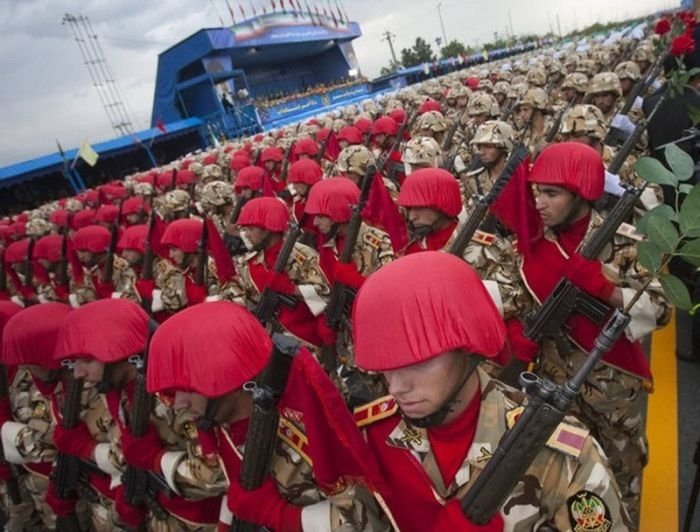|
|
Annual Armed Forces Day, Iran
|
Iran strives to revive the golden age of Persian science. The country has increased its publication output nearly tenfold from 1996 through 2004, and has been ranked first in terms of output growth rate followed by China. Despite the limitations in funds, facilities, and international collaborations, Iranian scientists remain highly productive in several experimental fields, such as pharmacology, pharmaceutical chemistry, organic chemistry, and polymer chemistry. Iranian scientists are also helping construct the Compact Muon Solenoid, a detector for CERN's Large Hadron Collider. In 2009, a SUSE Linux-based HPC system made by the Aerospace Research Institute of Iran (ARI) was launched with 32 cores and now runs 96 cores. Its performance was pegged at 192 GFLOPS. Sorena 2 Robot, which was designed by engineers at University of Tehran, was unveiled in 2010. the Institute of Electrical and Electronics Engineers (IEEE) has placed the name of Surena among the five prominent robots of the world after analyzing its performance.
In the biomedical sciences, Iran's Institute of Biochemistry and Biophysics is a UNESCO chair in biology. In late 2006, Iranian scientists successfully cloned a sheep by somatic cell nuclear transfer, at the Rouyan research centre in Tehran. According to a study by David Morrison and Ali Khademhosseini (Harvard-MIT and Cambridge), stem cell research in Iran is amongst the top 10 in the world. Iran ranks 15th in the world in nanotechnologies.
The Iranian nuclear program was launched in the 1950s. Iran is the 7th country in production of uranium hexafluoride. Iran now controls the entire cycle for producing nuclear fuel. Iran's current facilities includes several research reactors, a uranium mine, an almost complete commercial nuclear reactor, and uranium processing facilities that include a uranium enrichment plant.
The Iranian Space Agency launched its first reconnaissance satellite named Sina-1 in 2006, and a space rocket in 2007, which aimed at improving science and research for university students. Iran placed its domestically built satellite, Omid into orbit on the 30th anniversary of the Iranian Revolution, on 2 February 2009, through Safir rocket, becoming the ninth country in the world capable of both producing a satellite and sending it into space from a domestically made launcher.
|
|









